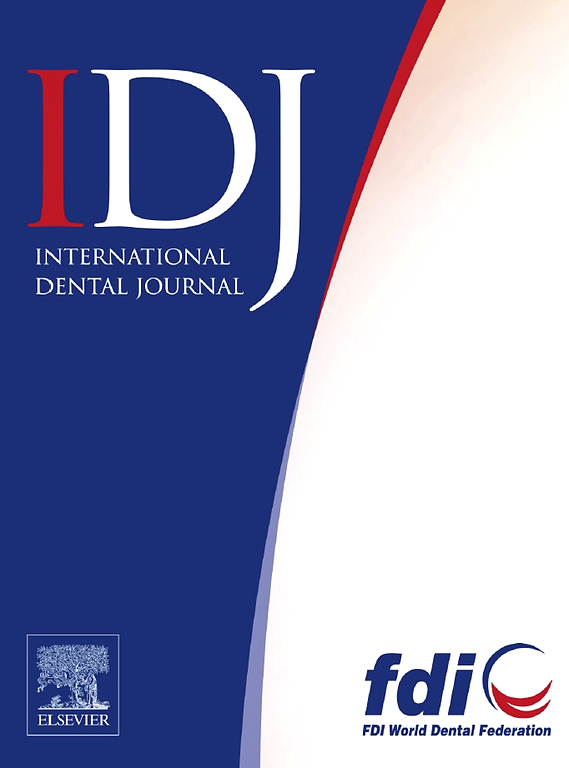靶向MSR1促进胞吐:不可逆性牙髓炎免疫稳态调节的新策略
IF 3.7
3区 医学
Q1 DENTISTRY, ORAL SURGERY & MEDICINE
引用次数: 0
摘要
目的探讨巨噬细胞介导的efferocytosis在不可逆性牙髓炎炎症消退中的作用,重点研究巨噬细胞清道夫受体1 (macrophage scavenger receptor 1, MSR1)的功能相关性。方法采用基因表达综合(GEO)数据集(GSE77459, GSE92681,共30例),对3例健康个体和3例牙髓炎患者的牙髓组织进行全转录组测序。批量校正后,鉴定出差异表达基因(DEGs) (|Fold Change|>1.5, P < .05),并通过基因本体(GO) /京都基因与基因组百科全书(KEGG)富集、CIBERSORT免疫细胞反卷积和机器学习进行分析。通过免疫荧光、定量实时聚合酶链反应(qRT-PCR)和免疫印迹(WB)验证Efferocytosis活性。选择MSR1在大鼠牙髓炎模型中通过小干扰RNA (siRNA)敲低进行体内验证。结果共鉴定出467个差异表达基因,这些基因在免疫应答和吞噬体相关途径中富集。牙髓炎组织中巨噬细胞浸润明显增加,并伴有efferocytic标志物上调。免疫荧光显示,人炎性牙髓中MER原癌基因酪氨酸激酶(MERTK)阳性的巨噬细胞能够吞噬caspase 3 (CASP3)和聚adp核糖聚合酶(PARP)阳性的凋亡细胞。MSR1被认为是关键的调控因子。在大鼠中,敲低Msr1可损害凋亡细胞的清除,降低Mertk的表达,加重炎症。结论msr1通过促进巨噬细胞efferocytosis维持牙髓内免疫稳态,为牙髓靶向生命治疗提供理论依据。本文章由计算机程序翻译,如有差异,请以英文原文为准。
Targeting MSR1 to Facilitate Efferocytosis: A Novel Strategy for Immune Homeostasis Regulation in Irreversible Pulpitis
Aim
To investigate the role of macrophage-mediated efferocytosis in resolution of inflammation during irreversible pulpitis, with a focus on the functional relevance of macrophage scavenger receptor 1 (MSR1).
Methods
Whole-transcriptome sequencing was performed on pulp tissue from 3 healthy individuals and 3 with pulpitis, integrated with Gene Expression Omnibus (GEO) datasets (GSE77459, GSE92681; total n = 30). After batch correction, differentially expressed genes (DEGs) were identified (|Fold Change|>1.5, P < .05) and analyzed by Gene Ontology (GO) / Kyoto Encyclopedia of Genes and Genomes (KEGG) enrichment, CIBERSORT immune cell deconvolution, and machine learning. Efferocytosis activity was validated by immunofluorescence, Quantitative real-time polymerase chain reaction (qRT-PCR), and Western blot (WB). MSR1 was selected for in vivo validation via small interfering RNA (siRNA) knockdown in a rat pulpitis model.
Results
A total of 467 differentially expressed genes were identified, which were enriched in immune response and phagosome-related pathways. Macrophage infiltration was significantly increased in pulpitis tissues, accompanied by upregulation of efferocytosis markers. Immunofluorescence showed that MER proto-oncogene tyrosine kinase (MERTK)-positive macrophages in human inflammatory dental pulp could phagocytize apoptotic cells positive for caspase 3 (CASP3) and poly(ADP-ribose) polymerase (PARP). MSR1 is regarded as a key regulatory factor. Knockdown of Msr1 in rats can impair the clearance of apoptotic cells, reduce the expression of Mertk, and aggravate inflammation.
Conclusion
MSR1 maintains immune homeostasis in the dental pulp by promoting macrophage efferocytosis, providing a theoretical basis for targeted vital pulp therapy.
求助全文
通过发布文献求助,成功后即可免费获取论文全文。
去求助
来源期刊

International dental journal
医学-牙科与口腔外科
CiteScore
4.80
自引率
6.10%
发文量
159
审稿时长
63 days
期刊介绍:
The International Dental Journal features peer-reviewed, scientific articles relevant to international oral health issues, as well as practical, informative articles aimed at clinicians.
 求助内容:
求助内容: 应助结果提醒方式:
应助结果提醒方式:


